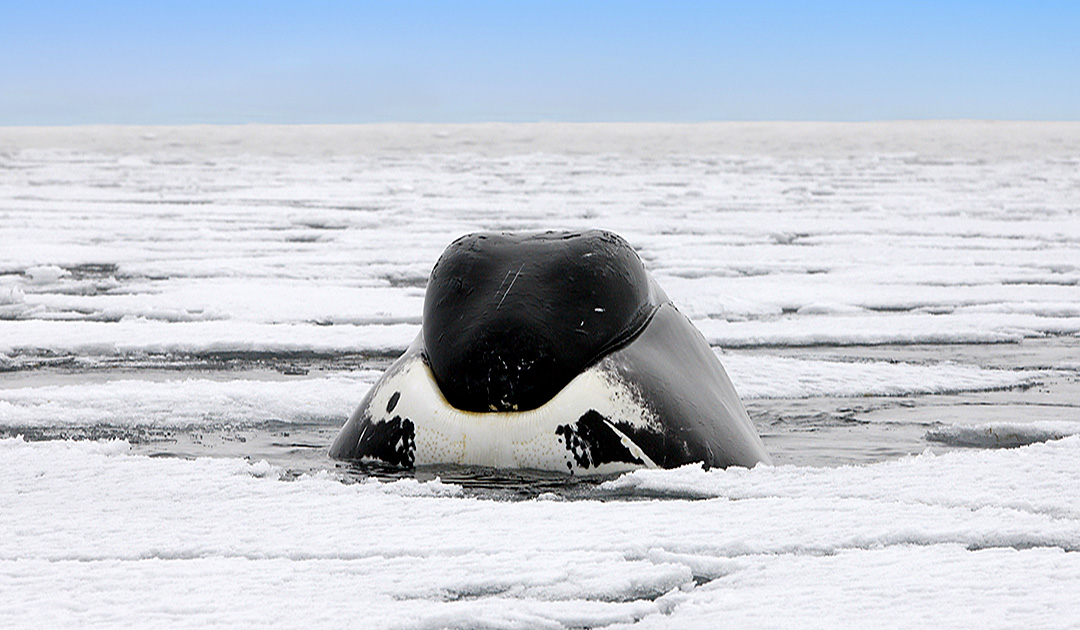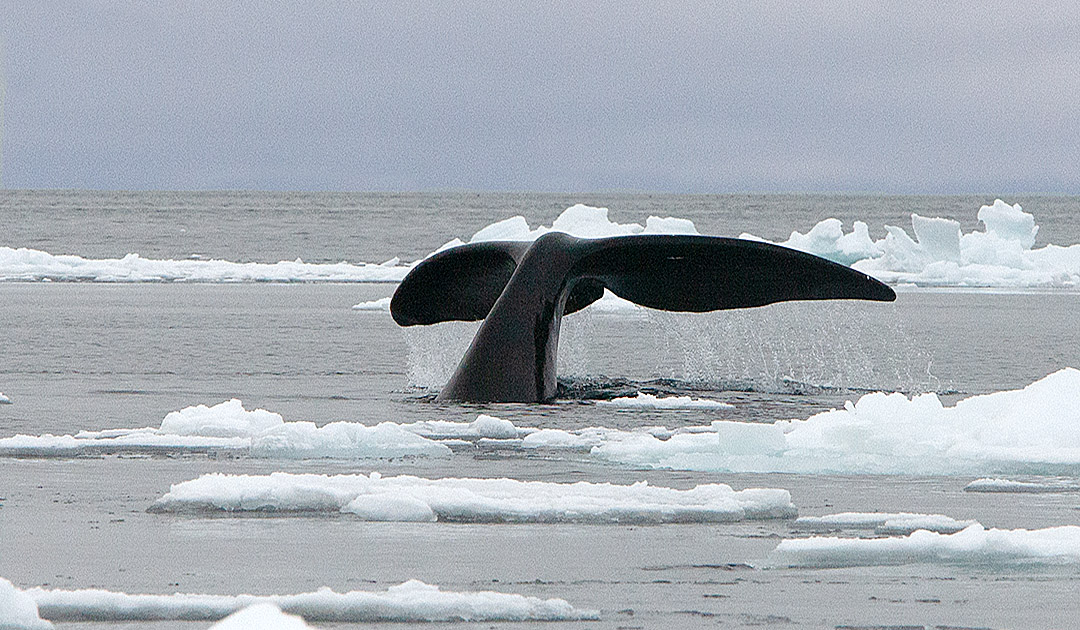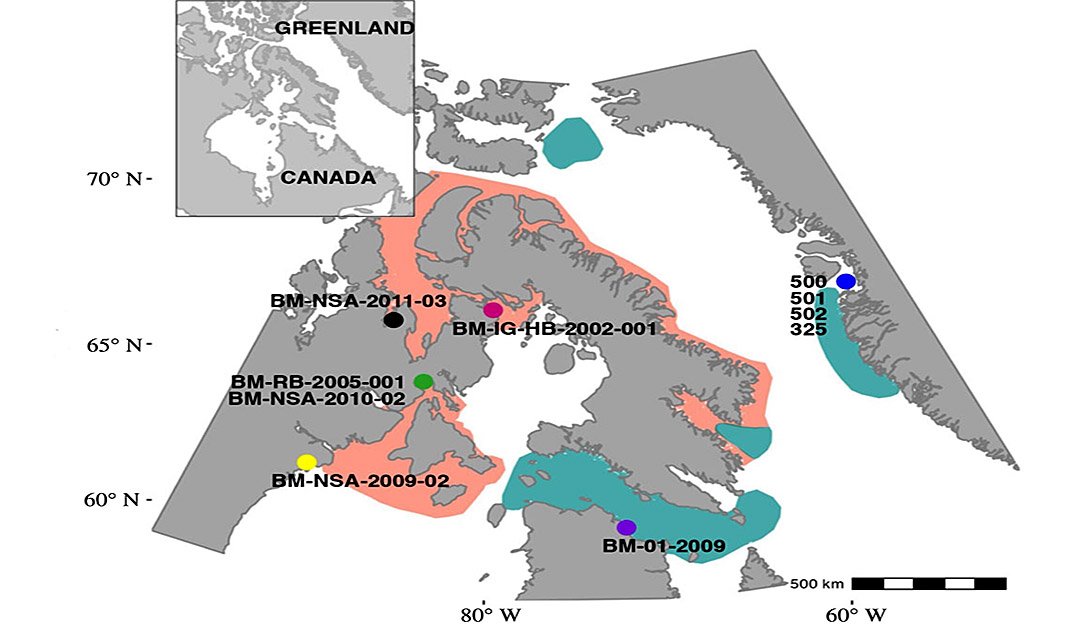
Bowhead whales are enormous animals and also hold some records among mammals. The animals, which can grow up to 18 metres long, can reach an age of over 200 years, a record among mammals. The pure Arctic resident has a layer of fat of up to 70 centimetres to protect it from the cold, which is also a record. In addition, the head is very large in relation to the body. Almost a third of the total length is taken up by the head. This enables it to break through layers of ice up to 30 cm thick.
The whale owes its size and weight to its diet of Arctic krill and schools of fish, which it sifts out of the water with its mouth, which can be up to 4 metres long, and its baleen. Typically, the animal does not dive very deep when foraging, and dives last up to twelve minutes. After a dive, the whale spends one to two minutes breathing at the surface. Bowhead whales also mature very late and until now it was assumed that the gestation period (pregnancy) was about 14 months.

Recent studies suggest longer gestation period
An extensive study now shows that the gestation period of Bowhead whales may last 23 months instead of only the assumed 14 months. Now, an international team led by Professor Nadine Lysiak from Suffolk University in Boston has used a new research method: They analysed hormone traces deposited in the baleen of ten female Bowhead whales.
The data trace the concentration of progesterone – a hormone secreted during pregnancy – and suggest a gestation period of nearly two years. This would make the Bowhead whale surpass the elephant. At 22 months, the elephant previously held the corresponding record among mammals.
The science team is not quite sure yet, because the data not only show an increase in progesterone at month 23, but a second one at month 14. This could also mean that the animals had become pregnant 23 months earlier, but that the pregnancy was delayed and only really occurred at month 14. Such a strategy is observed in some Arctic mammals and is thought to protect the expectant mother from investing too much energy, which she may not have in the fall, in embryo development. If the energy reserves are lacking in the fall, the body rejects the fertilized egg, a kind of natural abortion.

Bowhead whales – Residents of the Arctic
Bowhead whales are found only in the Northern Hemisphere in Arctic waters, where they spend most of their lives near the pack ice edge. They are divided into five populations based on their distribution: the Davis Strait/Baffin Bay population, the Bering/Chukchi/Beaufort Sea population, the Hudson Bay/Foxe Basin population, the Sea of Okhotsk subpopulation, and the Svalbard population. The different Bowhead whale populations migrate within their range and do not move to warmer waters to overwinter like other large whales. This makes Bowhead whales one of three whale species, along with Beluga whales and Narwhales, that spend their entire lives in the Arctic.
Heiner Kubny, PolarJournal
More about this topic





